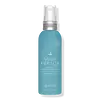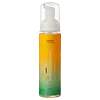What's inside
What's inside
 Key Ingredients
Key Ingredients

 Benefits
Benefits

 Concerns
Concerns

 Ingredients Side-by-side
Ingredients Side-by-side

Water
Skin ConditioningDimethicone
EmollientPropanediol
SolventAloe Barbadensis Leaf Juice
Skin ConditioningGlycerin
HumectantCocos Nucifera Fruit Extract
EmollientPanthenol
Skin ConditioningCreatine
Skin ConditioningTocopherol
AntioxidantCaesalpinia Spinosa Fruit Pod Extract
Helianthus Annuus Sprout Extract
Skin ConditioningSalicylic Acid
MaskingArtocarpus Heterophyllus Fruit Extract
Skin ConditioningLactobacillus Ferment
Skin ConditioningPhospholipids
Skin ConditioningPolyquaternium-16
Sodium PCA
HumectantLactic Acid
BufferingUrea
BufferingGlycine
BufferingNiacinamide
SmoothingAllantoin
Skin ConditioningAlanine
MaskingSerine
MaskingSodium Hyaluronate
HumectantTocopheryl Acetate
AntioxidantChlorella Vulgaris Extract
Skin ConditioningPolyglyceryl-6 Caprylate
EmulsifyingPolyglyceryl-4 Caprate
EmulsifyingAmmonium Acryloyldimethyltaurate/Beheneth-25 Methacrylate Crosspolymer
Emulsion StabilisingMaltodextrin
AbsorbentEthylhexylglycerin
Skin ConditioningLaureth-23
CleansingLaureth-4
EmulsifyingTrisodium Ethylenediamine Disuccinate
Citric Acid
BufferingPotassium Hydroxide
BufferingPotassium Sorbate
PreservativeSodium Benzoate
MaskingPhenoxyethanol
PreservativeParfum
MaskingCoumarin
PerfumingWater, Dimethicone, Propanediol, Aloe Barbadensis Leaf Juice, Glycerin, Cocos Nucifera Fruit Extract, Panthenol, Creatine, Tocopherol, Caesalpinia Spinosa Fruit Pod Extract, Helianthus Annuus Sprout Extract, Salicylic Acid, Artocarpus Heterophyllus Fruit Extract, Lactobacillus Ferment, Phospholipids, Polyquaternium-16, Sodium PCA, Lactic Acid, Urea, Glycine, Niacinamide, Allantoin, Alanine, Serine, Sodium Hyaluronate, Tocopheryl Acetate, Chlorella Vulgaris Extract, Polyglyceryl-6 Caprylate, Polyglyceryl-4 Caprate, Ammonium Acryloyldimethyltaurate/Beheneth-25 Methacrylate Crosspolymer, Maltodextrin, Ethylhexylglycerin, Laureth-23, Laureth-4, Trisodium Ethylenediamine Disuccinate, Citric Acid, Potassium Hydroxide, Potassium Sorbate, Sodium Benzoate, Phenoxyethanol, Parfum, Coumarin
Water
Skin ConditioningPEG-40 Hydrogenated Castor Oil
EmulsifyingGlycerin
HumectantCocamidopropyl Betaine
CleansingParfum
MaskingRicinus Communis Seed Oil
MaskingCarica Papaya Fruit Extract
Skin ConditioningMangifera Indica Seed Butter
Skin ConditioningAscorbic Acid
AntioxidantCholecalciferol
Retinyl Palmitate
Skin ConditioningTocopherol
AntioxidantTocopheryl Acetate
AntioxidantPanthenol
Skin ConditioningMaltodextrin/Vp Copolymer
Sodium PCA
HumectantCetrimonium Chloride
AntimicrobialPropylene Glycol
HumectantQuaternium-80
Caprylyl Glycol
EmollientPhenoxyethanol
PreservativeSorbic Acid
PreservativeWater, PEG-40 Hydrogenated Castor Oil, Glycerin, Cocamidopropyl Betaine, Parfum, Ricinus Communis Seed Oil, Carica Papaya Fruit Extract, Mangifera Indica Seed Butter, Ascorbic Acid, Cholecalciferol, Retinyl Palmitate, Tocopherol, Tocopheryl Acetate, Panthenol, Maltodextrin/Vp Copolymer, Sodium PCA, Cetrimonium Chloride, Propylene Glycol, Quaternium-80, Caprylyl Glycol, Phenoxyethanol, Sorbic Acid
Ingredients Explained
These ingredients are found in both products.
Ingredients higher up in an ingredient list are typically present in a larger amount.
Glycerin is already naturally found in your skin. It helps moisturize and protect your skin.
A study from 2016 found glycerin to be more effective as a humectant than AHAs and hyaluronic acid.
As a humectant, it helps the skin stay hydrated by pulling moisture to your skin. The low molecular weight of glycerin allows it to pull moisture into the deeper layers of your skin.
Hydrated skin improves your skin barrier; Your skin barrier helps protect against irritants and bacteria.
Glycerin has also been found to have antimicrobial and antiviral properties. Due to these properties, glycerin is often used in wound and burn treatments.
In cosmetics, glycerin is usually derived from plants such as soybean or palm. However, it can also be sourced from animals, such as tallow or animal fat.
This ingredient is organic, colorless, odorless, and non-toxic.
Glycerin is the name for this ingredient in American English. British English uses Glycerol/Glycerine.
Learn more about GlycerinPanthenol is a common ingredient that helps hydrate and soothe the skin. It is found naturally in our skin and hair.
There are two forms of panthenol: D and L.
D-panthenol is also known as dexpanthenol. Most cosmetics use dexpanthenol or a mixture of D and L-panthenol.
Panthenol is famous due to its ability to go deeper into the skin's layers. Using this ingredient has numerous pros (and no cons):
Like hyaluronic acid, panthenol is a humectant. Humectants are able to bind and hold large amounts of water to keep skin hydrated.
This ingredient works well for wound healing. It works by increasing tissue in the wound and helps close open wounds.
Once oxidized, panthenol converts to pantothenic acid. Panthothenic acid is found in all living cells.
This ingredient is also referred to as pro-vitamin B5.
Learn more about PanthenolParfum is a catch-all term for an ingredient or more that is used to give a scent to products.
Also called "fragrance", this ingredient can be a blend of hundreds of chemicals or plant oils. This means every product with "fragrance" or "parfum" in the ingredients list is a different mixture.
For instance, Habanolide is a proprietary trade name for a specific aroma chemical. When used as a fragrance ingredient in cosmetics, most aroma chemicals fall under the broad labeling category of “FRAGRANCE” or “PARFUM” according to EU and US regulations.
The term 'parfum' or 'fragrance' is not regulated in many countries. In many cases, it is up to the brand to define this term.
For instance, many brands choose to label themselves as "fragrance-free" because they are not using synthetic fragrances. However, their products may still contain ingredients such as essential oils that are considered a fragrance by INCI standards.
One example is Calendula flower extract. Calendula is an essential oil that still imparts a scent or 'fragrance'.
Depending on the blend, the ingredients in the mixture can cause allergies and sensitivities on the skin. Some ingredients that are known EU allergens include linalool and citronellol.
Parfum can also be used to mask or cover an unpleasant scent.
The bottom line is: not all fragrances/parfum/ingredients are created equally. If you are worried about fragrances, we recommend taking a closer look at an ingredient. And of course, we always recommend speaking with a professional.
Learn more about ParfumPhenoxyethanol is a preservative that has germicide, antimicrobial, and aromatic properties. Studies show that phenoxyethanol can prevent microbial growth. By itself, it has a scent that is similar to that of a rose.
It's often used in formulations along with Caprylyl Glycol to preserve the shelf life of products.
Sodium PCA is the sodium salt of pyroglutamic acid. It is naturally occurring in our skin's natural moisturizing factors where it works to maintain hydration.
The PCA stands for pyrrolidone carboxylic acid, a natural amino acid derivative.
This ingredient has skin conditioning, anti-inflammatory, and humectant properties. Humectants help hydrate your skin by drawing moisture from the air. This helps keep your skin moisturized.
Learn more about Sodium PCATocopherol (also known as Vitamin E) is a common antioxidant used to help protect the skin from free-radicals and strengthen the skin barrier. It's also fat soluble - this means our skin is great at absorbing it.
Vitamin E also helps keep your natural skin lipids healthy. Your lipid skin barrier naturally consists of lipids, ceramides, and fatty acids. Vitamin E offers extra protection for your skin’s lipid barrier, keeping your skin healthy and nourished.
Another benefit is a bit of UV protection. Vitamin E helps reduce the damage caused by UVB rays. (It should not replace your sunscreen). Combining it with Vitamin C can decrease sunburned cells and hyperpigmentation after UV exposure.
You might have noticed Vitamin E + C often paired together. This is because it is great at stabilizing Vitamin C. Using the two together helps increase the effectiveness of both ingredients.
There are often claims that Vitamin E can reduce/prevent scarring, but these claims haven't been confirmed by scientific research.
Learn more about TocopherolTocopheryl Acetate is AKA Vitamin E. It is an antioxidant and protects your skin from free radicals. Free radicals damage the skin by breaking down collagen.
One study found using Tocopheryl Acetate with Vitamin C decreased the number of sunburned cells.
Tocopheryl Acetate is commonly found in both skincare and dietary supplements.
Learn more about Tocopheryl AcetateWater. It's the most common cosmetic ingredient of all. You'll usually see it at the top of ingredient lists, meaning that it makes up the largest part of the product.
So why is it so popular? Water most often acts as a solvent - this means that it helps dissolve other ingredients into the formulation.
You'll also recognize water as that liquid we all need to stay alive. If you see this, drink a glass of water. Stay hydrated!
Learn more about Water